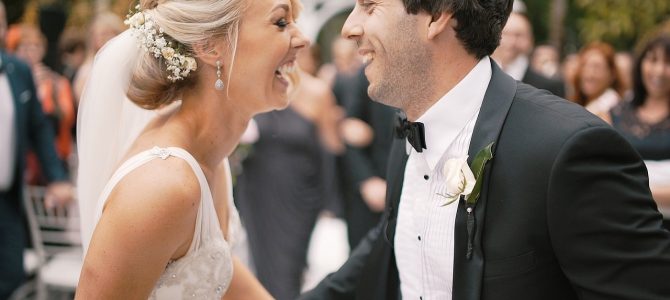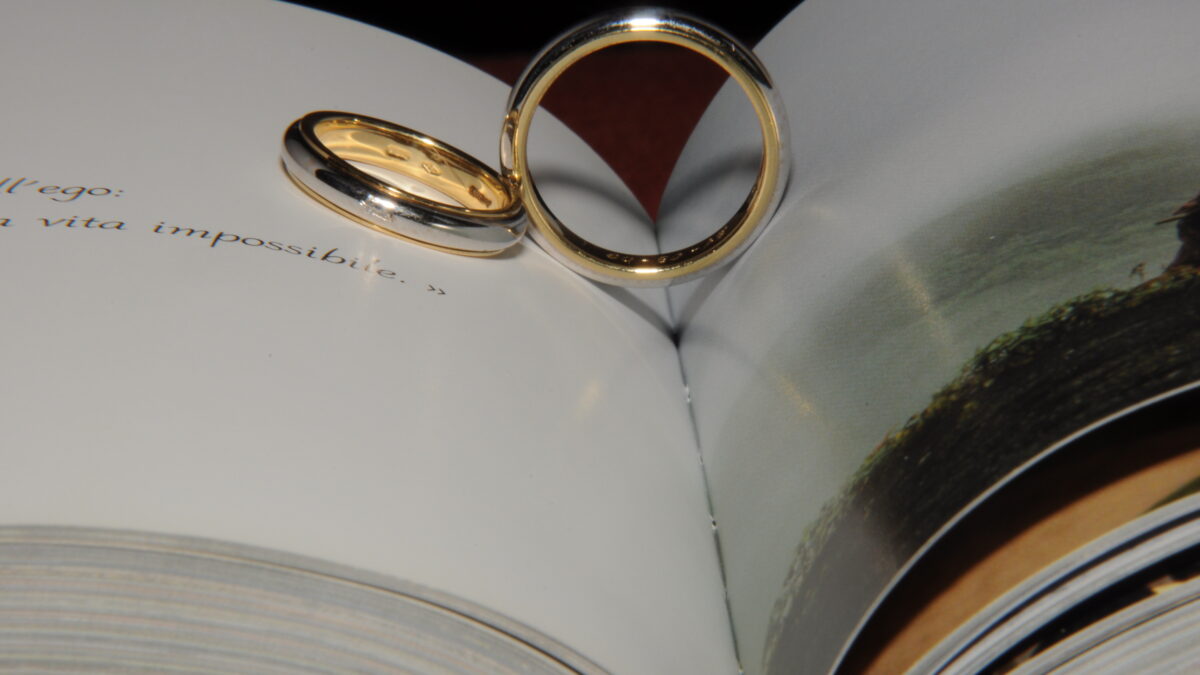
I was delighted when my daughter and her fiancé announced their engagement, but braced for one of life’s large, required expenditures: the wedding. The average cost of a wedding climbed to a record high of $35,329 last year, according to The Knot’s 2016 Real Weddings study. That’s up 8 percent from the 2015 average. I was thrilled for them, and just accepted that paying for the wedding was one of those life events one can neither afford nor avoid.
To my delight, with determination, ingenuity, knowledge, skills, and a wide network of loving friends, family members, colleagues, and fellow congregants, the couple arranged themselves a fantastic wedding ceremony, reception, and dinner (55 attendees) for an absurdly low cost.
I have attended many weddings over the years, including several that easily surpassed the $100,000 threshold. In every respect, this one felt like one of those lavish events. The venue and ceremony were beautiful, the food exquisite, the service impeccable. There was room to dance. There was an open bar all night. Valet parking was included.
Total cost to me, the father of the bride: $6,000. Now, that is still not a small amount, and well above the $400 threshold that 47 percent of Americans cannot come up with to cover an emergency room visit. I put it on my credit card (I get miles!). But still, what a bargain!
Two Key Ingredients: Friends and Smart Priorities
How did they do it? Well, first of all, these working thirty-somethings are two of the loveliest and dearly loved people I know. This is important, because the biggest part of their strategy was to draw upon the skills, knowledge, experience, and connections of their wide circle of friends, family, colleagues, and fellow congregants. Many components of the wedding they provided themselves or were provided at steep discounts or no charge.
If you look over the dozens of my articles published on the NewGeographic.com over the last eight years, one theme you will detect is a changing American society that is leaving a lot of people behind. See in particular “Why We Should Nourish Strong Families” and “Are We Unraveling?” We are a divided nation, as last year’s election and events since attest. This wedding showed me that maybe the way forward is closer to home than we realize.
The route my children took indicates priorities in order. They have both been through enough in their lives to know what’s important. They have become independent, smart, and strong. Their values are solid, their faith important. They know well that previous generations made do with much less, as do billions of people all over the world today. Also, they enjoyed the challenge!
Upon their engagement, these networks I mentioned—family, friends, co-workers, fellow congregants (these “little platoons,” in the words of Edmund Burke)—sprang into action. This cousin is an event planner who can help negotiate the price of the venue; that friend is a photographer who offered to take engagement photos for free; this acquaintance from church is a budding videographer who wants to record a wedding for his resume, free of charge. And so it went.
It Takes a Village to Make a Wedding
The venue for the rehearsal dinner, a co-working space in Hollywood, was provided at no charge, since the groom had volunteered there by painting the walls and helping the creative community move into the space. The bride’s grandmother wanted to help pay for the wedding dress, and these tech-savvy young Americans know websites where you can buy a beautiful one that has been used only once, then sell it back!
They found a restaurant that was just the right size and layout for the ceremony, dinner, and celebration altogether, and booked it for the night. This was, of course, after meeting with the owner and chef over a tasting dinner to discuss menu and logistics. On the night of the event, the main room was set up for the ceremony. Attendees were greeted with a flute of champagne and mingled in the bar and all other corners of the place. The photographer and videography roamed; the bride prepared in an anteroom.
The ceremony was announced. Guests took their seats and the ceremony commenced. We steadied each other when I walked her down the aisle. Their own pastor officiated, which made it personal. One of their friends read a Hebrew blessing over the couple as they stared into each other’s eyes.
After the ceremony, everyone went into the bar area. Drinks and hors d’oeuvres were available. The staff transformed the main area from the ceremony set-up to the dining set-up. Dinner was announced, and everyone preceded to the buffet. A rollicking good time was had by all. Afterwards we headed back to the bar area for dancing and celebration.
Combining Venues and Services Saves Bucketloads
By doing the wedding in this manner, the couple avoided a separate facility fee, saving thousands of dollars. The dinner was buffet, saving thousands on wait staff. The couple assembled their own playlist on an iPod and played it through the sound system, saving thousands on a band. We used regular linens, no specials or extras required!
The couple negotiated to have everything included: alcohol, parking, tax, and gratuity. The restaurant owner-chef loved it: he cleared more than a regular night’s revenue, and proudly served at the buffet himself!
The bride did her own hair and makeup. The couple borrowed a small microphone and speaker from their church. They made their own centerpieces out of the free engagement photos and $2 frames from Ikea. The venue was beautiful so didn’t need decorations. The only flowers were the bride’s bouquet, a few boutonnières and corsages, and the free garlands of flowers left by a wedding that had rented out the restaurant that morning.
The groom’s suit was bought on sale at a J. Crew outlet. Instead of a big expensive wedding cake, there were delicious cupcakes that cost $1 each. The newlyweds stayed at an AirBnb Hollywood bungalow on their wedding night, and honeymooned at a cheap romantic cabin in the mountains in Ojai.
Frills Optional; Love Essential
The night was a fantastic success. Everyone loved it, and the love in the room for the newlyweds was life-affirming. People came up to me all night to congratulate the father of the bride. Not knowing the couple had handled (or delegated) everything with such cost-consciousness, they must have been impressed I could afford such an affair!
Can I take any credit? Well, my wife and I (and the groom’s parents too, I might add) are simply passing down what we have learned and experienced with our own families, communities, friends, co-workers, and fellow congregants. That’s all, but that’s a lot. When one is part of such networks, one contributes as possible and relies as necessary.
Is this not a prescription for us all as Americans—family, community, work, and faith, just as Charles Murray has been telling us? Is this not the way for us to find that elusive unity and solidarity: through a more local, decentralized, personal environment? Is this not the best of our heritage, and the best hope for the future?
Wait a minute. From each according to ability and to each according to need—isn’t that socialism? No, there’s no government involved: it’s all voluntary, local, and small-scale. Politics shouldn’t matter, folks. Our support networks make life.









